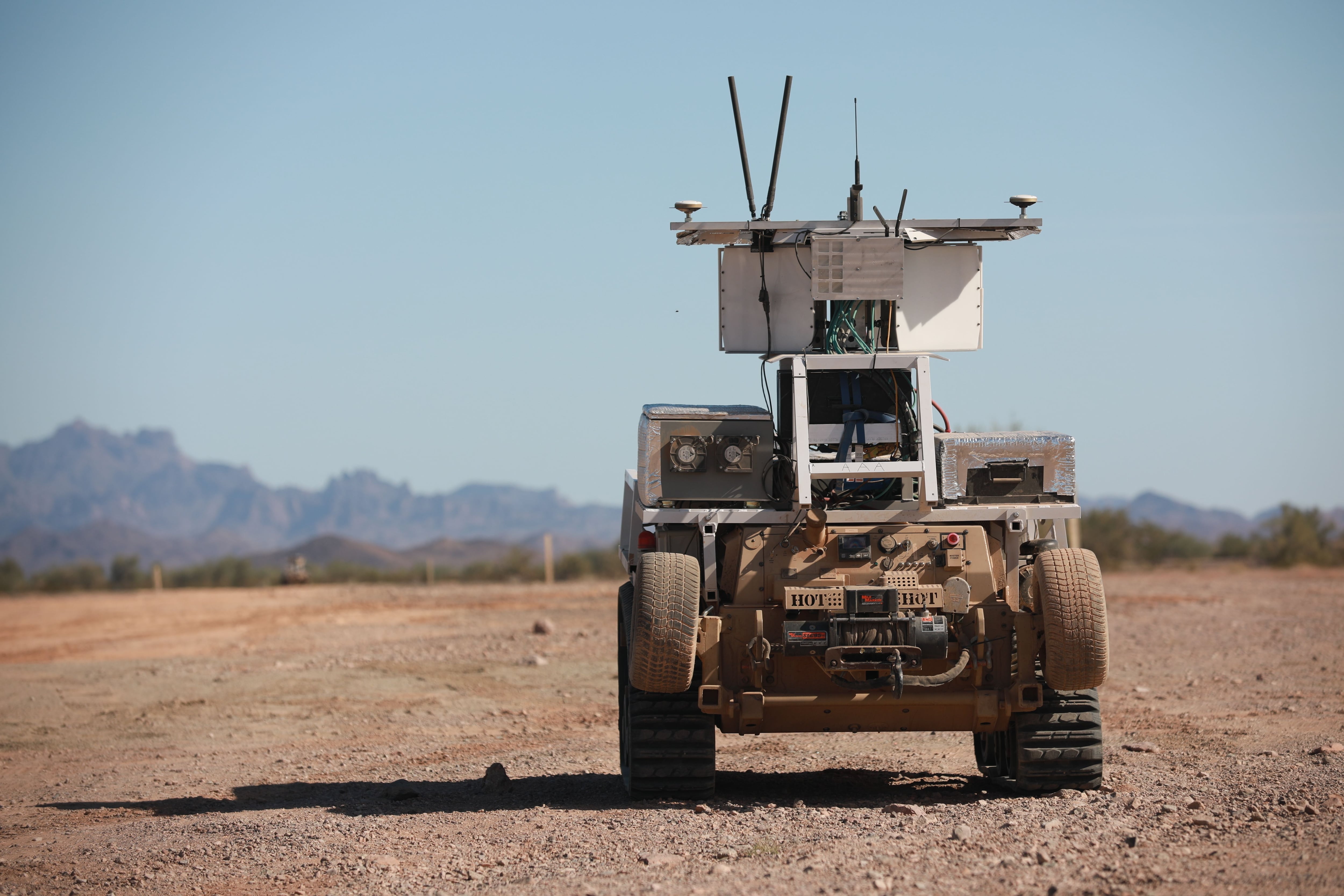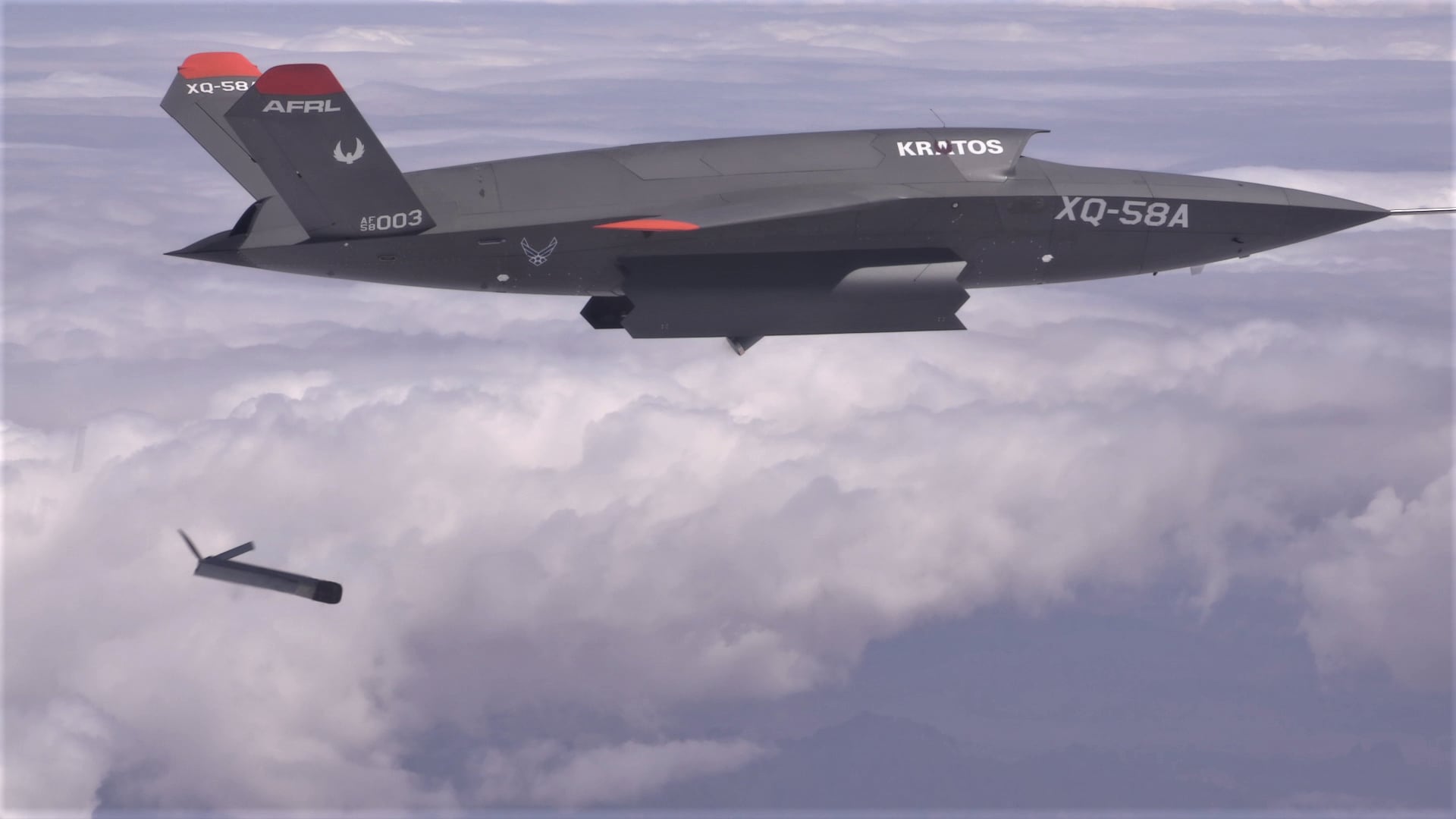LONDON ― The U.S. military may need to reorganize to fight future wars, which will be profoundly changed by artificial intelligence, robotics and other advanced technologies, according to Army Gen. Mark Milley, chairman of the Joint Chiefs of Staff.
The nation’s top military officer said during a trip to Europe this week that he’s working on recommendations that could lead to a high-level reorganization. After launching Army Futures Command in 2018 to drive modernization when he was that service’s chief of staff, Milley said he’s mulling a similar effort for the joint force.
“You’re going to have to do really fundamental changes to our military in order to take advantage of this change in the character of war. In order to do that, you need organizations to drive that,” he told reporters. “You look at what the Army did with Army Futures Command, for example. Can that be done at the joint level, at the DoD level?”
How Army Futures Command could be adapted across the services, which have innovation efforts of their own, is unclear, and Milley wasn’t ready to say whether he’d be proposing an umbrella “Joint Futures Command.” Army civilian leaders have moved some of the service’s command’s powers back to its senior civilian acquisitions office, though it shepherded 24 modernization programs since its inception.
RELATED

The comments follow a warning he gave graduating cadets at the U.S. Military Academy at West Point last week that the military’s technological edge is in danger. No longer the unchallenged global power, America is being tested in Europe by Russian aggression and in Asia by China’s dramatic economic and military growth.
“We’re going to have to really think hard about fundamental shifts to our military,” Milley said in London. “The country that maximizes development of these technologies with their doctrines and organizations, in the time we have available, could be decisive in the next conflict ... I would suggest, in 10 to 15 years, you have to do these fundamental changes.”
The Pentagon has been trumpeting its stepped up investments in emerging technologies and last week made its latest tech-focused organizational move. An Emerging Capabilities Policy Office will help integrate autonomous systems, hypersonic tech, directed-energy weapons, and other innovations into the department strategy, planning guidance and budget processes.
The principal military advisor to the president and the secretary of defense, Milley said he is also thinking through the implications of emerging technologies, following the lead of Defense Secretary Lloyd Austin. The military is examining options for operational design and structure of the force ― its brigades, divisions and fleets ― but also its institutions.
“The institutions we have today may or may not be optimally designed to leverage these technologies,” he said.
Drawing a parallel with the horse bit and stirrups that allowed for mounted warfare some 3,000 years ago, Milley said that the existing technology behind Fitbits and iPhones allow soldiers to sense their environment like never before while accurate, long-range precision munitions let them destroy targets like never before.
Coupled with AI’s potential to speed battlefield decision-making and the robotics and the autonomous technologies that are transforming the character of labor, militaries and warfare could be entirely transformed. Trucking, which is already adapting to driverless vehicles, and other industries that lend themselves to robotics will fundamentally change, Milley said.
“With respect to the military, that’s no less true. We have a wide variety of tasks that can be and probably will be conducted by some form of robot,” he said. “The unmanned aerial vehicle is an example, but you could see in the future, pilotless air forces ― manned/unmanned teaming where you have one aircraft that’s got a human in it and the rest of the squadron are robots.
“You could see tank formations where maybe one armored vehicle is manned and the rest are robotic,” Milley said. “You could see a sailor-less Navy where one or two ships are command-type ships and the rest are all robotic ships.”
RELATED

With the potential to reduce casualties and manpower costs, and revamp logistics, the implications are “almost infinite,” he said, adding that the Pentagon should be investing in those technologies, and changing the concepts of how it fights, its doctrine, organizations, leadership development.
“I believe we that we are in a fundamental change in the character of war, and by that I mean how you fight, where you fight, the doctrine, the equipment, the tactics, techniques and procedures, and so on,” Milley said. “We’re in the middle of a real, unbelievable fundamental change, which is probably the biggest fundamental change in the history of warfare.”
With Jen Judson in Washington, D.C.
Joe Gould was the senior Pentagon reporter for Defense News, covering the intersection of national security policy, politics and the defense industry. He had previously served as Congress reporter.








